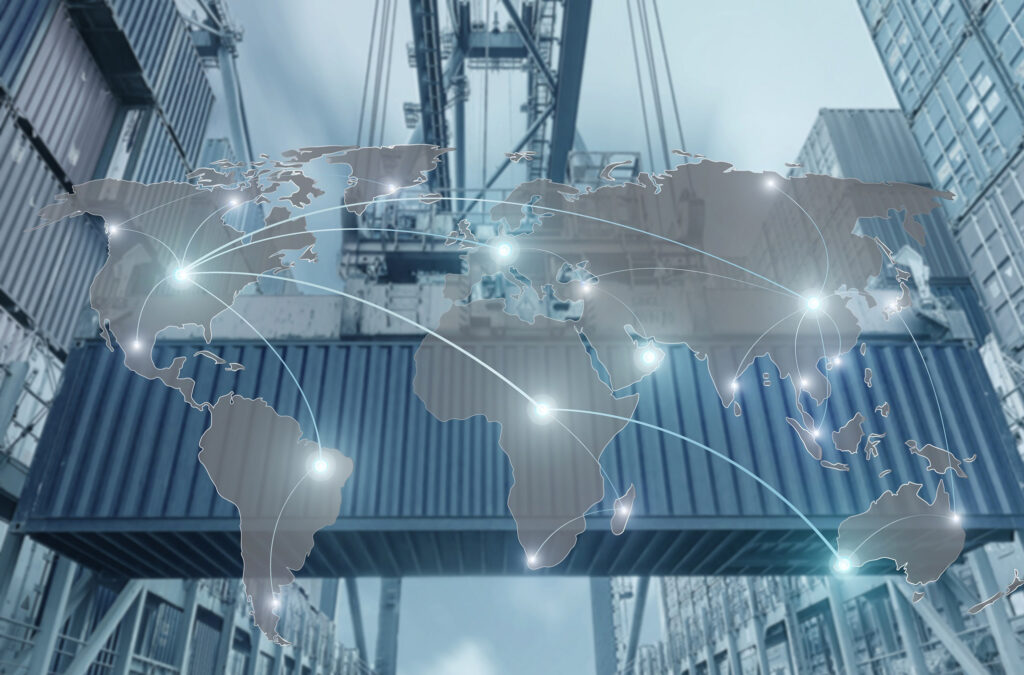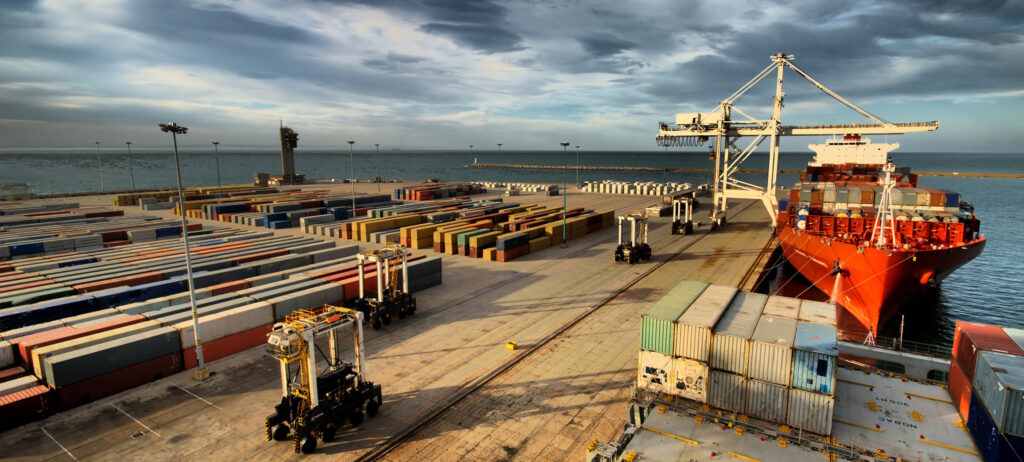- Perspective – May 2025
- Columbus Stainless Advert
- Market Intelligence – Sassda GPS
- Market Intelligence – Fair Trade or Foul Play? The Taxing Truth About Trade Tariffs
- State of the Stainless Nation
- Technical Insight – Stainless Steel and South Africa’s water crossroads
- NDE Advert
- Professional Profile : Pierre Rootman
- Technical Insight – Can mild steel survive where stainless fails?
- Millenium Metals Advert
- Member News – Cronimet
- Market Intelligence – Angola
- Fastenright Advert
- Member News – Coalition Engineering
- Member News – Scientific Engineering
- Sassda News – Western Cape Golf Day

Based on a large number of enquiries and understandable concern from our members, Sassda Executive Director Michel Basson unpacks the impact of tariffs and trade barriers on South Africa’s stainless steel value chain. What’s clear is that with input costs rising; global competition intensifying, and local industries under pressure, an economic battle is underway, and the role of duties and protective measures is under scrutiny like never before…
What Are Tariffs?
Tariffs are a type of trade barrier that makes imported goods more expensive than local ones. Typically, they take the form of taxes or duties placed on imports, costs which are eventually passed on to consumers. Tariffs are commonly used as protectionist tools in international trade.
Key points to remember:
- Tariffs are a form of protectionist trade barrier applied in various ways.
- They are paid by domestic consumers, not the exporting country.
- Tariffs raise the relative prices of imported goods.
- Other trade barriers include quotas, licensing, standardisation rules, and local content requirements.
- These tools also make foreign goods more expensive or harder to access, giving local products a competitive edge.
Why Are Tariffs and Trade Barriers Used?
1. Protecting Local Jobs
Tariffs can shield local industries from foreign competition. Without such protection, cheaper imports may force local businesses to cut jobs or move production abroad. While this may save jobs in the short term, it can harm long term growth if local productivity doesn’t improve. Artificial protection often results in inefficient industries that can’t compete globally.
2. Protecting Consumers
Governments may impose tariffs on products considered unsafe or hazardous. For example, a tariff on imported food could be introduced if there’s concern about contamination or disease.
3. Supporting Emerging Industries
Developing economies sometimes use tariffs to protect start-up or sensitive industries. This raises import prices and encourages local production, with the goal of reducing unemployment and moving up the value chain. However, this strategy can be risky. Without competition, protected industries may produce poor-quality goods at higher prices. Subsidies to keep these industries afloat can also divert resources from more deserving sectors.
4. National Security
Certain industries especially those related to defence - are considered strategically important. Developed countries often use tariffs to protect these sectors.
5. Retaliation
Tariffs are sometimes used as a tool of retaliation. For instance, if France believes another country mislabels its local sparkling wine as “Champagne,” it might impose tariffs on goods from that country in response.
Common Types of Tariffs and Trade Barriers
Specific Tariffs
A fixed fee charged per unit of an imported product. The amount may vary depending on the product type
Ad Valorem Tariffs
A tariff based on a percentage of the product’s value. For example, a 10% ad valorem tariff on South African shoes sold in Japan would raise the price from R1 000 to R1 100 - making local Japanese shoes more competitive.
Non-Tariff Barriers:
- Licenses: Governments may require licenses for importing certain goods, restricting competition and driving up prices.
- Import Quotas: Limits on the volume of specific goods that can be imported. For example, the EU restricts imports of stainless steel primary products from South Africa.
- Voluntary Export Restraints (VERs): An exporting country agrees often under pressure to limit exports. The importing country may reciprocate with similar restrictions.
- Local Content Requirements: A rule that a certain percentage of a product must be made locally, either by component or by value.
Where does Sassda stand on duties and trade tariffs?
Sassda is recognised as the official voice of South Africa’s stainless steel value chain, representing members across the full spectrum of the industry. Many of these members also work with other metals, such as aluminium and carbon steel. Sassda’s mandate is to promote and grow local value addition to stainless steel, ensuring that competition between local and global suppliers benefits the domestic industry, its workforce, and the national economy.
However, the impact of tariffs can vary widely across sectors. To ensure its stance accurately reflects the interests of its members, Sassda consults directly with them, often via surveys, to gather informed input before engaging with government departments. Good decisions depend on good information, and Sassda’s role is to gather that data and facilitate the process around applications, support, or objections to proposed tariffs.
In 2025, Sassda is strengthening its ability to research and present market statistics, such as import and export data, in an unbiased, transparent way. While the association may not always take a side on specific tariff issues, it remains firmly committed to putting South Africa’s long-term industrial interests first.

Recent trade agreements between the United States, China and the United Kingdom, announced in May 2025, carry significant implications for South Africa’s economy, particularly in sectors like automotive, agriculture, and steel.
US-China Trade Agreement: Limited Relief, Continued Uncertainty
The U.S. and China have agreed to a 90-day truce in their ongoing trade war, with both nations committing to reduce tariffs by 115% while retaining a baseline 10% tariff. This development may ease global trade tensions temporarily; however, the agreement lacks binding commitments, leaving room for future policy reversals.
For South Africa, the de-escalation between the U.S. and China could lead to increased competition in key export markets. As China regains access to
U.S. markets, South African exports, particularly in agriculture and mining, may face stiffer competition, potentially impacting prices and market share.
US/UK Trade Deal: Potential Market Shifts
The newly announced US/UK trade agreement reduces tariffs on British steel and aluminium and lowers US tariffs on UK automobiles from 27.5% to 10% for up to 100 000 vehicles. While this deal strengthens US/UK trade relations, it may inadvertently disadvantage South African exporters.
South Africa’s automotive and steel industries, which previously benefited from preferential access to the U.S. market under the African Growth and Opportunity Act (AGOA), now face increased competition from UK products. The enhanced UK-US trade ties could lead to a reallocation of U.S. import preferences, potentially reducing demand for South African exports in these sectors.
Strategic Considerations for South Africa
In light of these developments, South Africa may need to reassess its trade strategies:
- Diversify Export Markets: Reducing reliance on traditional markets by exploring new trade partnerships in Asia, the Middle East, and within Africa could mitigate risks associated with shifting global trade dynamics.
- Strengthen Regional Trade Agreements: Leveraging agreements like the African Continental Free Trade Area (AfCFTA) may open up new opportunities for intra-African trade, providing alternative markets for South African goods.
- Enhance Competitiveness: Investing in value-added production and improving supply chain efficiencies can help South African industries remain competitive amid changing global trade policies.
By proactively adapting to the evolving international trade landscape, South Africa can work to safeguard its economic interests and promote sustainable growth.

